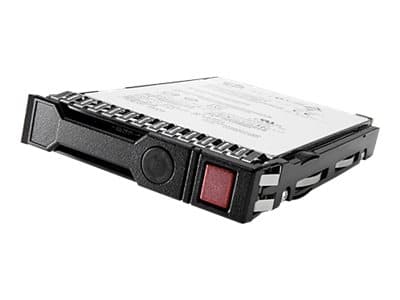
HPE 10TB SATA 7.2K LFF SC He 512e DS HDD
Product Description
HPE Midline - hard drive - 10 TB - SATA 6Gb/s
Type
Hard drive - hot-swap - advanced format 512e, Helium technology, Digitally Signed Firmware
Capacity
10 TB
Form Factor
3.5" LFF
Interface
SATA 6Gb/s
Data Transfer Rate
600 MBps
Spindle Speed
7200 rpm
Features
Advanced format 512e, Helium technology, Digitally Signed Firmware
Manufacturer Warranty
1-year warranty
Bundled with
HP SmartDrive carrier
Header
Product Line
HPE
Model
Midline
Brand
HPE
Manufacturer
Hewlett Packard Enterprise
Packaged Quantity
1
Storage
Type
Hard drive
Service & Support
Type
1-year warranty
Hard Drive
Capacity
10 TB
Data Transfer Rate
600 MBps
Spindle Speed
7200 rpm
Form Factor
3.5" LFF
Hard Drive Type
Hot-swap hard drive
Form Factor (Short)
3.5"
Interface
Serial ATA-600
Form Factor (metric)
8.9 cm LFF
Form Factor (Short) (metric)
8.9 cm
Miscellaneous
Color Category
Black
- Smart carriers
- Helium drives
Additional Features:
- HPE Hard Drives with smart carriers are designed to provide an interface to communicate critical status and management information. System status LED icons and a spinning activity ring reflecting the data-writing process notify users of the current system status. A blue LED located behind the handle can be activated remotely to guide users to a specific drive tray, while a do-not-remove icon positioned on the tray's eject button lights up to warn users when the removal of the drive would cause data loss.
- Although hard drives are sealed, they have air inside. Air can create turbulence-induced risk vibrations which can limit the storage density of HDDs. Newer helium-filled drives virtually eliminate turbulence because helium is 1/7th as dense as air. This lower density allows the read/write mechanism to spin more easily and precisely, with less drag. Less internal turbulence means the drive platters can be closer together, allowing more platters and increasing the capacity potential in the same space. Less turbulence also means helium drives tend to use less power, and run cooler and quieter.